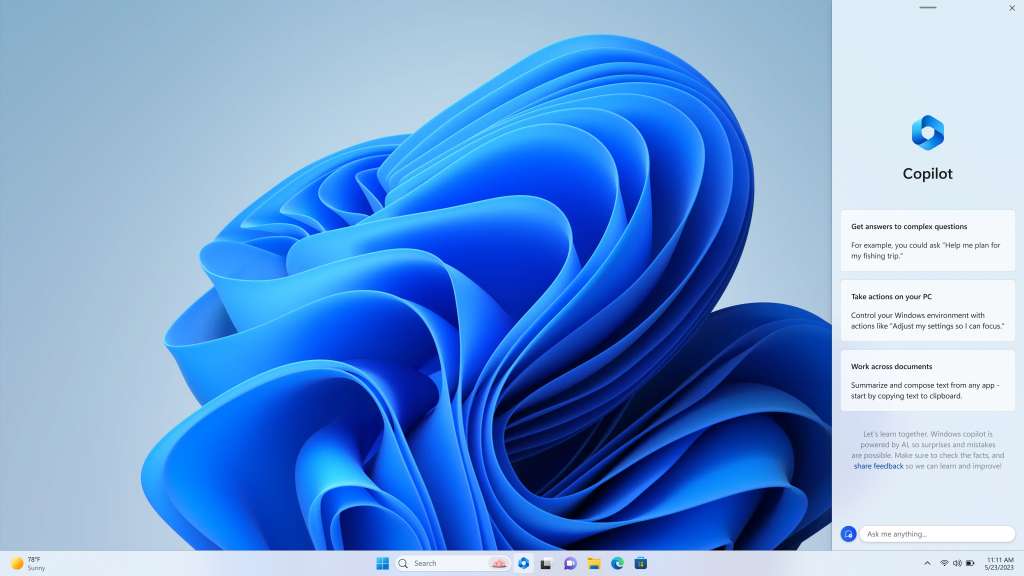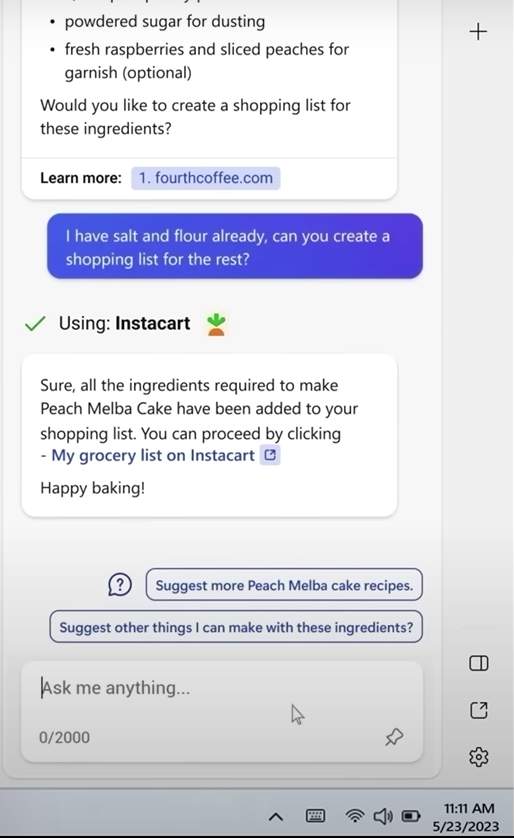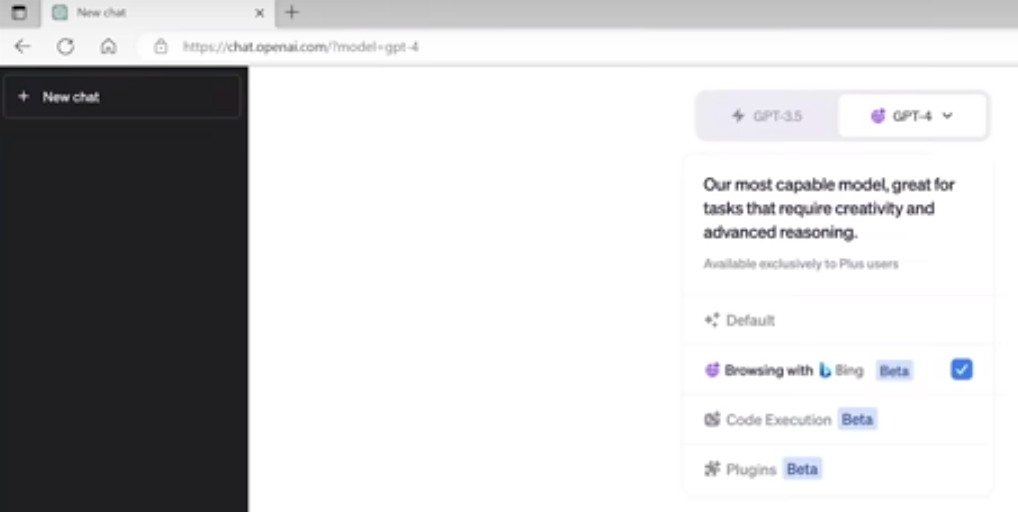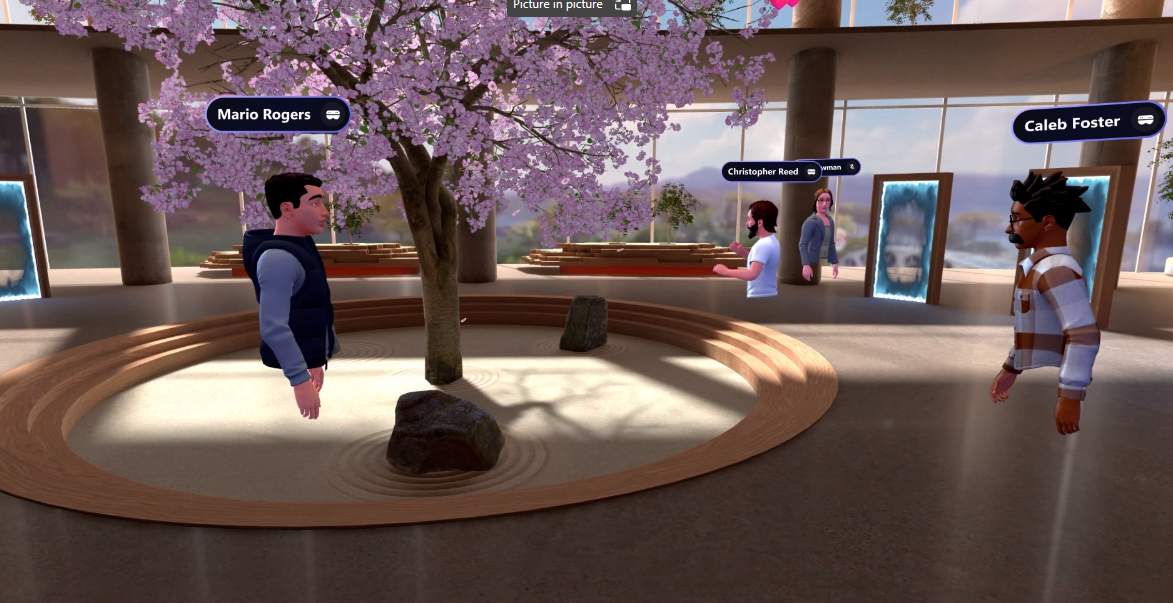The annual Microsoft Build 2023 conference just occurred and it came with a truckload of announcements. This event is Microsoft’s developer-focused conference, and it’s usually about cloud services and developer platforms. But it’s not unusual for the conference to be used as a marketing opportunity, and this year wasn’t an exception. Microsoft marketed the hell out of Windows, Microsoft 365, and Bing among other products, and it did so with a singular focus on AI. Specifically, on the Copilot brand.
We’ll talk about Copilot developments in Microsoft products, what it means for users, and what it means for developers. But while Copilot was the front and center of the event, there were plenty of other interesting announcements. There were new developments in GitHub, Microsoft 365, Teams, and of course Azure. This event makes it clear which direction the company is taking, how it plans to monetize its huge investments (mostly on AI), and where it is trying to push its customers. So let’s go over the announcements and see their implications for Microsoft’s business strategy, the users, and the industry as a whole.
1. Copilot Everywhere
If you’ve been following Microsoft lately, it should come as no surprise that the event was revolving around Open AI’s ChatGPT tech. Microsoft has recognized a rare opportunity to be on the cutting edge of technology and it’s pushing all-in on all fronts. The main way it’s utilizing ChatGPT is with the brand Copilot. But what exactly is Copilot? It can be confusing because it’s a bit different in each case. Let’s make it clearer and start with one of the main announcements, that Copilot is coming to Windows 11 .
In Windows 11, Copilot is going to manifest as a button in the Taskbar that opens a sidebar chatbot. You’ll be able to interact with a large language model (LLM) based on ChatGPT that includes your personalized context. It’s probably going to have access to your Sharepoint and OneDrive files, email, calendar, etc. You’ll be able, for example, to copy-paste documents to this sidebar and ask Copilot to summarize them.

The Copilots in Microsoft 365 are more specific for the application you’re using. It still appears as a chatbot sidebar, but it has the context of your current document. If you’re in Teams, you’ll be able to ask it to summarize some conversation. If you’re in Outlook, you’ll be able to ask it to generate an email response, and if you’re in Excel you’ll be able to have it explain a formula.
None of those Copilots are in production unless you’re including Bing Chat under that brand, but Microsoft 365 now started an early access program .
Using LLMs isn’t cheap and Microsoft is going to pay a fortune providing those services for free. If we’re to rely on ChatGPT API pricing , an average query (of about 750 words) costs 0.002$. That sounds cheap, but it adds up. ChatGPT 4 is about 20 times more expensive. Fine-tuning models (adding context) is another expense. Those services are going to cost much less for Microsoft because of their partnership with OpenAI and because they are running on Azure. Having said that, it comes to a lot, and I think that Copilot features will come at an extra cost after a while. Microsoft 365 might add an extra tier and Windows 11 might require a personal Microsoft 365 account.
But any price increase is going to be in the future. Right now, Microsoft is enjoying the hype train and it’s going to convert as many users to Windows 11 and Edge as possible. The company has been losing market share to Mac laptops and wasn’t able to convert users from Windows 10 to Windows 11 at a high rate, but Copilot is a great incentive for someone to buy a new Windows 11 PC.
Edge is a way for customers to enjoy Copilot without using Windows 11. Anyone who uses Edge will get Bing search by default, as well as the MSN as a homepage, which equals Ad revenue for Microsoft.
2. Extending Copilot with Plugins
Another big announcement at the conference was support for 3rd party plugins in Copilot products and Bing Chat. ChatGPT already supports plugins, and the Copilot plugins will have the same protocol as the ones for ChatGPT, which means developers can use the same plugin for ChatGPT and Copilot.
Here’s how a plugin works: when it is registered, it defines a prompt filter to activate. For example, if you’re a hat shop, you can have your plugin running whenever the word “hat” appears in a prompt. The plugin registers an API endpoint and Copilot will call that API with the user’s prompt when needed. So, in my hat shop plugin, I might get called for a prompt like “Show me the best looking baseball hats”.
At that point, a plugin can do what it wants. In case of a hat shop, I can go to my product database and return the most expensive hats, for example. Then, the plugin’s response might be “Check out these best looking hats: " with a set of links and pictures, or an interactive Form.
Another thing you can do as a hats shop is to create an LLM that includes your own database of hats. Then, when the user prompts for best looking hats, your LLM will do its thing and you don’t have to write dedicated code. Azure OpenAI Service can take one of OpenAI’s models (GPT 3.5 or GPT 4) and extend it with your own data. Microsoft calls this grounding and OpenAI calls this fine-tuning (I’m not sure if those mean the same things or different ways to extend a model). Once the LLM is extended with the store’s hat database, the hat shop can embed a chatbot widget in their website. It will be its own Copilot if you will. Or the hat shop can use this new model in its plugin by using Azure OpenAI Service’s API.
This makes me think that maybe the world of database queries is over and now all software developers will be doing is fine-tuning LLMs and prompt engineering. Well, maybe not just yet, but it’s pretty interesting.
Yet another approach is for the plugin to generate a new prompt for the Copilot where it was called. For example, if you’ve asked “What time is the hat shop open?”, the plugin can change the query to “Given the opening hours … such and such…, " + [original user’s prompt]. This is an easy solution to many kinds of prompt types, like “Is the hat shop open on Sundays?” or “When does the hat shop close on Tuesday the 19th?”.

With plugins, Microsoft keeps to its foremost strategy of being a platform. Such plugins will allow you to get a great experience with any 3rd party that needs the context of the Copilot and the organization. For example, a plugin for Microsoft Word should be able to get the active document as context, allowing for a lot of useful capabilities.
Additional resources:
- Empowering every developer with plugins for Microsoft 365 Copilot
- Keynote: The era of the AI Copilot
- Breakout: Harness the power of AI: Extend Copilot and beyond
3. Bing is now ChatGPT’s default search engine
As you might know, the ChatGPT model is trained on data up until September 2021. This is obviously not ideal, especially given the competition from Google’s Bard which has up-to-date knowledge. The solution provided by Bing Chat was to do a search and extend the language model on the fly with the search responses. The announcement here is that ChatGPT is adopting the same approach. Unlike Bing, ChatGPT can use any search engine, but the default search engine will be Bing.

This is great publicity for Bing, which wasn’t able to grab a big chunk of market share from Google . At least until recent developments. I wonder if Microsoft is paying extra for this or if it’s an act of goodwill by Open AI, given Microsoft’s huge investment.
4. Fabric
Microsoft Fabric is a new app that combines Power BI, Data Factory, and the next generation of Synapse in one. It has capabilities like data integration, data warehousing, data science, real-time analytics, and business intelligence. And of course, Copilot. Copilot for Microsoft Fabric is going to be in preview soon .
I’m not entirely sure of the motivation for this new product. Maybe the reason was to incorporate Copilot into a single app that has the fuller context of the individual apps. Or maybe Microsoft wants to sell more Azure OneLake. Or maybe I’m being too cynical and the motivation is to create a better user experience for the analytics story. In any case, the old apps will continue to be supported for now.
5. Microsoft showcases the power of ARM and NPUs
Microsoft showcased how every Windows machine can become an AI power horse with NPUs (Neural Processing Units). A demo showed an image-processing workload that takes 8 seconds with an NPU instead of 2 minutes with a CPU. I think this is meant to be used with an ARM version of Windows, powered by a Qualcomm chip. Microsoft has been trying to create a good ARM-architecture laptop for a long time to be able to provide high performance with low battery usage like Apple was able to do with their M1 and M2 chips. Up to now, Windows ARM PCs didn’t get great reviews .
6. Introducing GitHub Copilot X
GitHub Copilot is an AI solution for software developers that predates ChatGPT. It was the first product with the Copilot brand. I’ve used it a lot and it’s quite good. It has the context of your project and offers intelligent code suggestions in the IDE. It sure saves me a lot of typing. This new version called GitHub Copilot X will have a ChatGPT-like experience with a sidebar where you’ll be able to request to generate code, modify code, and even fix bugs. The demo that was shown by GitHub’s CEO Thomas Dohmke was impressive.
It seems Microsoft is doing a great job of finding new sources of revenue with GitHub.
7. Microsoft Dev Box and Azure Deployment Environments
Microsoft Dev Box , which was announced to be available in July, is a dev workstation in the cloud that you can spin on demand. The schtick is that it’s pre-configured for your project, so you will save a lot of time setting up new dev machines. You’ll be able to remote-desktop to your Dev Box and work just as comfortably as you do on your regular workstation.
Azure Deployment Environments, which was announced to be generally available , is similar. It also offers to create on-demand machines in the cloud with pre-configured settings, except that the purpose of this is to deploy-to and test your services rather than to have it work as a development workstation. I’m not sure why two separate products that do basically the same thing are needed. Maybe the configuration process needs of a deployment environment machine are different than the ones used for development.
You’ll be able to view, deploy, and manage both products from a new dedicated portal, says Microsoft . I think this means Dev Home.
8. Dev Home is your new developer portal
Microsoft announced Dev Home , a new app that acts as a portal to development progress. You will be able to see dashboards and widgets for active developer machines (Dev Boxes), GitHub repositories, GitHub issues, GitHub pull requests, and monitoring dashboards. The app is extensible for 3rd party providers to be able to add their own widgets. Products like Jira, Datadog, and AWS will be able to add their own items, and in a perfect world, this will provide a high-level view of all your software development work.
9. Avatars in Teams and Teams Mesh
Avatars for Microsoft Teams will be generally available for all Microsoft 365 Business and Enterprise, starting this week in the Teams desktop app, says Microsoft . You’ll be able to hide your video feed in a whole new and entertaining way.
I didn’t try it and I don’t know if this is going to be a trend. If the software will be able to capture facial gestures, this could be fun and helpful for people who don’t necessarily want to show their faces at all times. But we’ll see how the world reacts.
To enrich the experience, Microsoft announced its immersive experience Microsoft Mesh is now available in private preview . I don’t know about that, this is a strange use-case for a workplace. What works for Sims, isn’t necessarily good for a staff meeting, you know?

Additional resources:
-
Microsoft Mesh: Transforming how people come together in the modern workplace
-
Pre-recorded: Explore how to build in 3D with Microsoft Mesh
Conclusion
These were just 9 out of 50 announcements in the Build conference, though I thought these were the most interesting ones. You can see all of the announcements in Microsoft Build 2023 Book of News or watch recordings from the event.
Microsoft is investing a ton of effort in AI and its Copilot brand, and it may look like throwing stuff against a wall and seeing what sticks at first glance. But I do think that Microsoft is being smart about this and making the right decisions. Even if some of those products fail, the hype and the increased usage of its products are worth it. Case and point, Microsoft recently announced that Bing reached 100 million daily active users, which is amazing.
Anyway, got some more insight on the recent announcements and Microsoft strategy? Go ahead and write in the comments section. Cheers.






Great overview of Microsoft Build 2023! I appreciate the insights on the new features and innovations. Excited to see how these updates will shape the future of development. Thanks for sharing!
The depth of research is commendable.
Thanks for putting this together Michael!
Think your summary of Microsoft Fabric, with "not entirely sure of the motivation for this new product" misses the mark of how much emphasis they are now probably going to put on this data solution. It would appear that they have merged both their engineering teams and strategy of Power BI and Data Factory/Synapse, with a switch from Data Warehouse being the core to a Data Lake using Delta Lake. And a switch to a tenant based pricing model like Power BI. I guess it's a response to the likes of Snowflake in the industry.